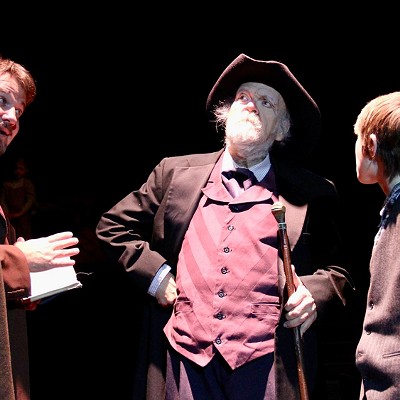
A recurring sentiment in the 24-page report is the “ugliness” of the corridor. The study emphasized the corridor’s role as a first impression for out-of-town guests leaving the airport: Miles of concrete, vacant store fronts and 1960s-era apartment complexes are the first glimpse many visitors have of Oklahoma City.
“We have been concerned for several years over the retail leakage and the beautification of I-240,” said Elaine Lyons, president of the South Oklahoma City Chamber.
Those concerns led to a partnership with the Urban Land Institute.
Oklahoma City received a ULI grant to fund the Envision 240 project, and a technical assistance panel was formed.
“The panel was made up of a former mayor, and also one of the city’s leading retail experts,” said Leslie Batchelor, ULI Oklahoma chair. “We also had a senior banker, an engineer experienced in traffic and streetscape projects, as well as other professionals — all of whom volunteered their time for the benefit of the community.”
Nearly 900 stakeholders shared their input and feedback, including property owners, businesses, neighborhood associations, real estate brokers, housing developers, churches and residents. The result was a report that concluded the I-240 corridor has the potential to be an attractive and popular destination.
It also provided several strategies and recommendations to revitalize and reinvent the area.
No ‘quick fix’
Historically, the area was developed for a different time and a different consumer.
“Shopping centers and strip centers built in the 1960s through the 1980s are at the end of the real estate investment cycle, and the loss of even one anchor store in a center can lead to its demise,” Batchelor said. “The I-240 corridor is on the cusp of this cycle. Now is the time to prevent a downward spiral from occurring.”
More than 100,000 cars travel I-240 daily, making it one of the city’s most visible areas — but also one of the least attractive. The ULI panel recommended identifying one or more key intersections to create nodes of development that are walkable, mixed-use and “filled with intense activity.”

“These nodes need not be retail-driven,” Batchelor said. “Senior living or even one of the MAPS 3 senior wellness centers might anchor a node, with the possibility of other types of housing or support services forming around such a node. This could serve as a catalyst for the entire area.”
The new face of retail will not appear overnight. Getting ahead of the curve requires three high-level strategies, the report noted.
First, “re-tenant” viable big- and mid-box stores; second, “reinvest” in the best retail centers and nodes; and third, “redevelop” outmoded retail for other uses, such as employment centers, civic and cultural amenities, residential and/ or mixed-use areas.
“Looking for a quick fix in redevelopment efforts is inevitably a mistake,” Batchelor said. “For such efforts to succeed, local residents, businesses and property owners must take the initiative, identify dedicated leaders, and create conditions for long-term redevelopment.
“Nothing will happen if people don’t take it upon themselves to act. And while the major changes take time, there are lots of improvements that can be made quickly, such as improving landscaping, eliminating trash and clutter and encouraging activities that bring visitors and customers to the area.”











